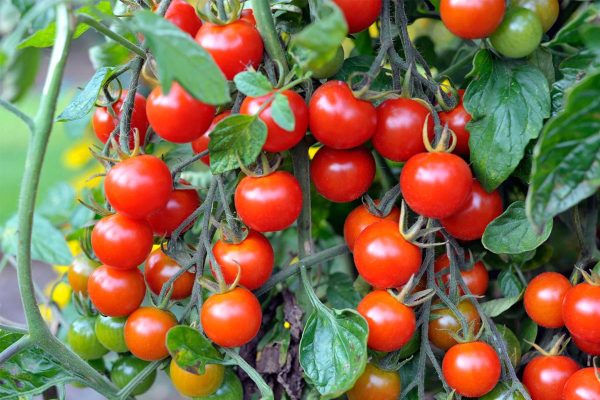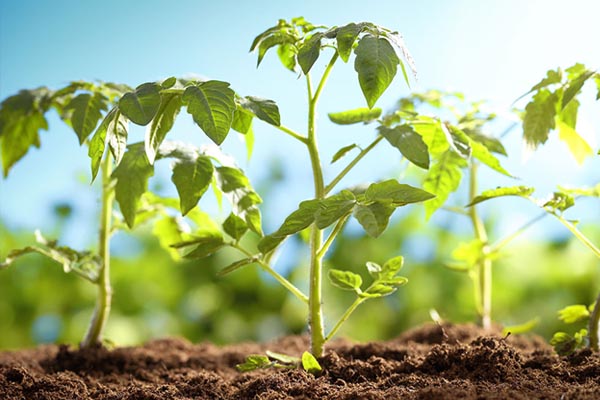
Tomato Transplanting Tips: A Guide to Timing and Techniques for Successful Gardening in Both Beds and Containers
Looking to transplant tomatoes in your garden but aren’t quite sure where to start? Transplanting tomatoes properly can require some finesse, especially for new gardeners. In this article, gardening expert and homesteader Meredith Corhs walks through the steps on how to transplant tomatoes in your garden, offering simple and clear guidance for a successful transplanting process.

Tomatoes are a staple in many home gardens, offering flavour and versatility in various dishes. Mastering the art of transplanting seedlings is crucial to ensure a thriving tomato harvest. In this comprehensive guide, we’ll delve into the essential tips for successfully transplanting tomatoes, whether you’re cultivating them in traditional garden beds or space-saving containers.
Tomato Transplanting Timing and Techniques for Successful Gardening in Both Beds and Containers
Understanding the Right Timing

Timing is everything when it comes to transplanting tomato seedlings. A common mistake is transplanting them too early or too late, hindering their growth and overall productivity. Wait until the seedlings have developed sturdy stems and at least two sets of true leaves before transplanting. This ensures they are strong enough to transition to a new environment.
Also Read This : Understanding Factors Leading to Slow Seedling Growth: Common Causes Explored
Selecting the Ideal Location for Garden Beds
Choosing the right location for your tomato garden bed is paramount for their success. Opt for a spot with well-draining soil that receives at least six to eight hours of sunlight daily. Tomatoes thrive in warm conditions, so choose a location that offers protection from strong winds. Proper spacing between plants is essential for good air circulation, reducing the risk of diseases.
Preparing the Soil

Before transplanting, prepare the soil by incorporating organic matter such as compost or well-rotted manure. This boosts soil fertility and enhances water retention. Tomatoes prefer slightly acidic to neutral soil, so ensure the pH level is 6.0 to 7.0. Ample soil preparation ensures the seedlings receive the necessary nutrients for robust growth.
Also Read This : Transplanting Seedlings: Knowing When and How to Move from Seed Tray to Garden or Containers
Transplanting Techniques for Garden Beds
When transplanting tomato seedlings into garden beds, dig a hole slightly more profound than the seedling’s root ball. Gently remove the seedling from its container, careful not to disturb the roots. Place the seedlings in the hole, backfill with soil, and water thoroughly. Applying a layer of mulch around the plants helps retain soil moisture and prevents weeds.
Choosing the Right Containers

For those with limited space or unfavourable soil conditions, container gardening is an excellent alternative. Select large containers with drainage holes to prevent waterlogging. Use a high-quality potting mix enriched with nutrients to provide the necessary support for tomato plants.
Also Read This : Effortless Elegance: Low-Maintenance Succulents Perfect for Indoor Gardens
Container Transplanting Techniques
Like garden beds, create a hole in the potting mix for the tomato seedling. Gently remove the seedling from its original container and place it in the hole. Ensure the top of the root ball sits just below the surface. Water thoroughly and place the container in a sunny location. Container-grown tomatoes may require more frequent watering, so monitor soil moisture regularly.
Also Read This : Know how to grow succulent plants in your home garden? Here are the tips
Caring for Transplanted Tomatoes
After transplanting:
- Monitor the moisture levels regularly and water the plants when the top inch of soil feels dry.
- Fertilize according to your tomato variety’s specific needs, and support indeterminate varieties as they grow.
- Keep an eye out for pests and diseases, addressing any issues promptly to ensure a healthy and productive tomato crop.
Tomato Plant Care Tips
Tomatoes are a popular and rewarding addition to any garden, but achieving a bountiful harvest requires proper care throughout the growing season. Follow these essential tomato plant care tips to ensure your plants thrive and yield delicious fruits.
Also Read This : Hibiscus Happiness: A Guide to Caring for Your Plant
Planting Location
Tomatoes thrive in full sunlight, so select a location that receives at least six to eight hours of direct sunlight daily. Ensure well-draining soil with a slightly acidic to neutral pH (6.0-7.0). Proper spacing between plants allows for good air circulation, reducing the risk of diseases.
Watering
Maintain consistent soil moisture to prevent issues like blossom-end rot and cracking. Water at the base of the plant to keep foliage dry and reduce the risk of fungal diseases. Avoid overwatering, as this can lead to root rot.
Also Read This : Meet the Green Guardians – Houseplants live for Over a Century
Fertilizing
Feed your tomato plants a balanced, slow-release fertilizer to provide essential nutrients. Start fertilizing when the first flowers appear and continue throughout the growing season. Avoid over-fertilizing, as excessive nitrogen can produce lush foliage but fewer fruits.
Pruning and Supporting
Prune your tomato plants to remove suckers and improve air circulation. Stake or cage indeterminate varieties to support their growth and prevent sprawling. This helps reduce the risk of diseases and ensures better access to sunlight for the developing fruits.
Also Read This : From Feng Shui to Oxygen Boost: The Multi-Faceted Benefits of Snake Plants
Pest and Disease Management
Regularly inspect your plants for pests such as aphids, caterpillars, and tomato hornworms. Employ natural or organic pest control methods to minimize damage. Fungal diseases like early blight and late blight can be prevented by spacing plants adequately, pruning, and applying fungicides when necessary.
Harvesting
Harvest tomatoes when they reach their mature colour, whether red, yellow, or another variety-specific hue. Gently twist or cut the fruits from the stem to avoid damaging the plant. Regular harvesting encourages continuous fruit production.
Also Read This : Growing 10 Ornamental Leafy Plants Successfully in Indoor Pots
Transplanting tomato seedlings is a crucial step in ensuring a successful harvest. By understanding the right timing, selecting suitable locations, preparing the soil, and employing proper transplanting techniques, you’ll set the stage for robust and fruitful tomato plants. Whether tending to a traditional garden bed or experimenting with container gardening, these tips will guide you towards a thriving tomato harvest. Happy transplanting!




